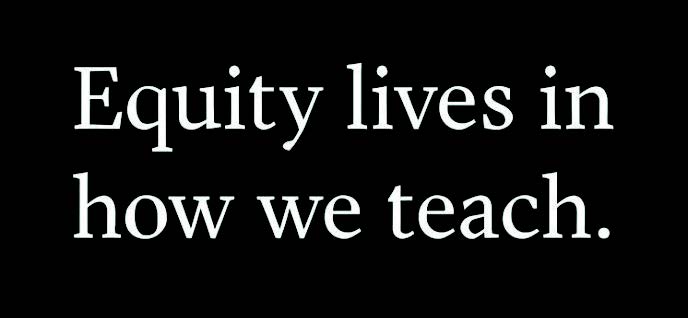Public education makes a promise: that every child will learn to read, write, do math and grow into a capable citizen. At its core, that’s what equity really means – every student getting what they need to learn and succeed. But across the country, that promise is slipping.
Classroom norms have changed. Teachers are dealing with more disruptive behavior, constant phone use, growing parent tensions and even legal threats. These aren’t rare issues – they’re daily roadblocks, taking time and energy away from teaching.
Too often, school systems respond by training teachers to manage controversy or navigate politics rather than helping them build strong classrooms where learning actually happens. It’s time to refocus.
Equity means every student is learning and we can see it. That doesn’t mean relying only on standardized tests. It means using daily work, student discussions, and quick checks for understanding to know who’s getting it and who’s not. Teachers need real-time information, and they need support to respond to it. But they can’t do it alone.
Equity means every student is learning.
School leaders must back teachers with systems that support learning and behavior – clear, consistent consequences that help students learn from their mistakes. And they need the courage to work alongside parents who are dealing with the same challenges at home that teachers face in classrooms. Fairness isn’t just about access. It’s about structure, support and shared responsibility.
The real work of equity happens in classrooms. It’s in the questions teachers ask every day: Who’s falling behind? Who’s tuning out? What needs to change?
When teachers are trained to notice who’s not learning – and given tools to adjust – they can act. That’s not political. That’s professional. And it’s how equity becomes more than a goal. It becomes a practice.
But teachers can’t carry this alone. If we want schools where every child can succeed, we all have a role to play. Families, school leaders and communities must work together to remove the barriers teachers face so they can do what they do best: help every student learn.
Chris Briggs-Hale serves as a member-at-large on the Board of Directors for the Pikes Peak Bulletin. The views expressed are his own and do not reflect the official position of the Pikes Peak Bulletin. He is a retired principal from Manitou Springs School District 14 and the CEO of Waterfall Learning, a leadership and instructional coaching firm serving schools nationwide. You can follow Chris on his Substack at ChrisBriggsHale.Substack. com.


